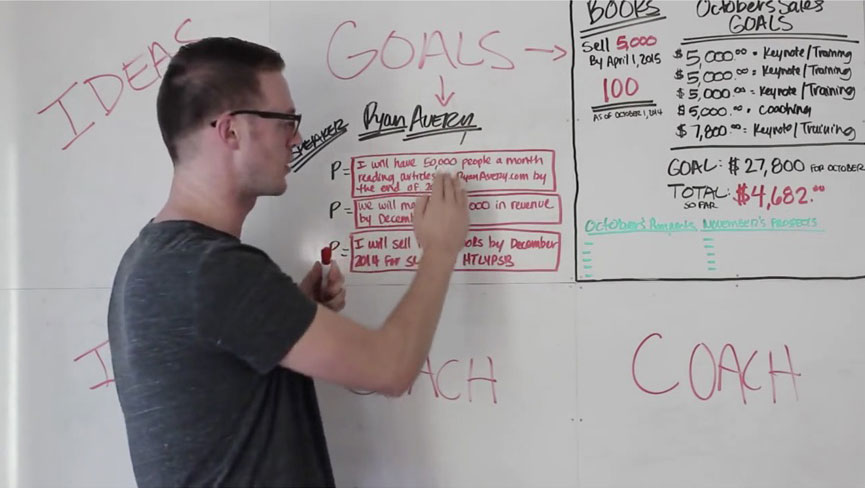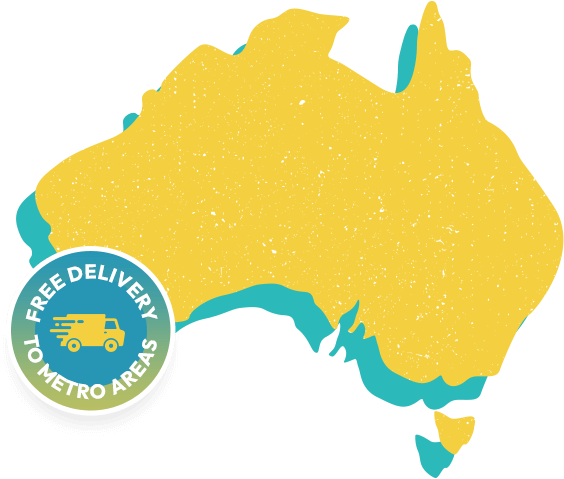Sign up to our newsletter to get 5% OFF your next order
How to Accomplish your Goals using a Whiteboard

Using a Whiteboard might seem self-explanatory, but there are more efficient ways to make the most of your space when using this method of communication in a business environment.
Although whiteboards can be purchased in various sizes, and hinged whiteboards exist which increase board space without taking up more floor space, you still need to be aware of the layout when writing up your business goals. The more organised your whiteboard, the easier and the quicker it is to read. And the more your whiteboard is read, the more the context is remembered and applied.
Mind mapping
Probably the best way to collect together information on a whiteboard is to use the same system as a mind map. This means placing a central theme in the middle of the board and letting related sub-headings flow out from this theme.
In the majority of business-related (and personal) cases, the central theme would be the accomplishment of a goal. However, many goals can be transient. It is therefore more useful to place only one or more long-term goals into the centre of your board – goals which will remain the same for at least a year – and simply leave them be. The advantage of this is obvious, your office is constantly reminded of the ultimate goal. Make sure these central, long-term goals have their own colour and are written large enough for the furthest desk to see clearly –three fingers high is usually enough.
Let’s use a straightforward and common goal – a 25% increase in sales by the end of the following year.
[su_youtube url=”https://youtu.be/WxyYh8r_0ig”]
Whiteboard accessories – when to use them
Whiteboards are often limited to just four marker colours: red, black, green and blue. Of course, you can find other colours, such as the pack of eight brightly coloured whiteboard markers from Staedtler, but these are often hard to find. For this article, we will stick to the four most common colours.
It is important to use your colour choices wisely, making sure one colour applies to one theme. An example of colour use would be:
- Long term goals – red
- Short term goals, financial information, prospects – green
- Tasks – black
- Ideas – blue
If you are limited to four colours but want to emphasise a particular word, phrase, department or team member, underlining text and increasing letter size are the natural first choices. However, apart from your main goals, priorities often change, meaning rubbing out and underlining something else. Your usually pristine whiteboard can end up looking chaotic and messy, and if you are not very adept at drawing faces team members might be offended by your attempt at a caricature. A much better idea is to use magnets. As the majority of modern whiteboards are now magnetic, colour coded whiteboard magnets can be used to highlight shorter-term priorities or represent team members.
Short-term goals
The next section of the whiteboard should be used to list short-term goals which run over one to three months and give a picture of what your team members or clients should be aiming for during this period of time.
As short-term goals often depict financial data, we’ve chosen to use green as the accent colour. Make sure all words can be seen from the furthest corner of the room and list your short-term goals for the following two to three months. Never cross off a goal unless it has been achieved (i.e. the contract has been signed, the money received, or the task completed). If some goals are the responsibility of a particular department, use that department’s allotted colour magnet as depicted in the blue ‘sales team’ magnet in the example below.
Take a photo
Making your whiteboard text large enough doesn’t just make sure everyone in the office can see what’s been written, but also means it’s easy to take a picture and send an image of your whiteboard to team members who either work from home or are often on the road. Easy.
Writing in a larger format also means that clients or freelancers can view (and read) the board if you sit beside it when hosting a conference call. If they are not supposed to know everything that is written on the board, adjust the angle of your laptop!
Modern technology now offers electronic colour copyboards, where the image on your whiteboard can be printed by way of a built-in printer. You might want to hang up copies of older boards to show how your company (and your staff) has reached its current position. This can often be very motivational.
Delegated tasks
The next section of your whiteboard mind map will list the tasks which are currently being implemented, or will shortly be implemented, to achieve the short-term goals.
Again, magnets come in handy when dealing with team members or departments, although each of these should have their own part of the board. Simple ticks can show which tasks have been completed.
Brainstorming
There should always be a separate section on your whiteboard for fresh ideas and inspiration. Many of the keywords or phrases written in the ‘Ideas’ section will be rubbed away once they have been discussed as a group. However, just one spontaneous idea could make the difference in attaining your long-term goal or missing it.
The ideas section is a free-for-all. Weekly or monthly meetings can then discuss the ideas in more detail. Let your team know that any form of inspiration is gratefully received and encourage them to add their own (sensible) input.
Rub it out and start again!
When the long-term goal has been achieved, it’s time to wipe the slate clean – literally. Yourself and your employees or colleagues might find it strange, coming into the office in the morning and no longer being faced with those words which had become imprinted on their minds for so many months.
This problem is easily solved … time to write a new long-term goal on the board and start planning how to get there!
Recent Posts
- The Ultimate Guide to Whiteboards—Everything You Need to Know
- How to Clean your Whiteboard
- Hospitality Solutions – specialty products for hotels & B&Bs
- Innovation is (25) King
- NAGA BIG Glass board Installation
- How to mount NAGA nord Board
- How to mount NAGA magnetic glass board
- Whiteboard Pointillist Portraits by Toru Yano
- How to Accomplish your Goals using a Whiteboard
- Its’ never school holidays at Designer Allboards!
FREE delivery to metro areas
We are a proud Queensland company and can deliver all of our stock to anywhere in Australia.
- SYDNEY
- MELBOURNE
- BRISBANE
- HOBART
- ADELAIDE
- PERTH
- DARWIN
- CANBERRA
- & Regional Areas


